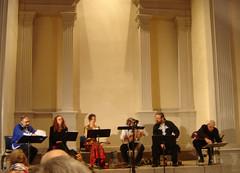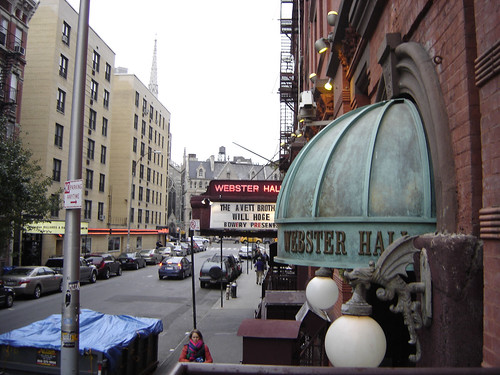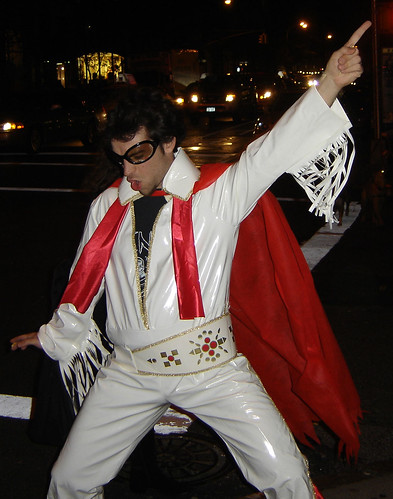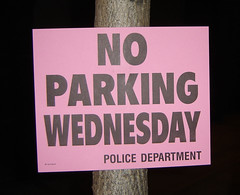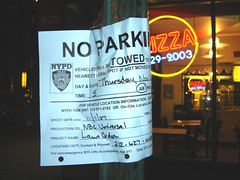From a Beatles tribute by a venerable classic rock band, to a DIY New York City crooner, to a singular bluegrass-jazz fusion project from up Colorado way, there's probably something for nearly everybody in this week's round-up. Read, click, and enjoy!
Pete Wernick & Flexigrass, What The
This appropriately titled CD comes as a nice surprise to the unprepared listener. A truly unique fusion of bluegrass and old-time jazz, it's a showcase for banjo picker extraordinaire Pete Wernick, vibraphonist Greg Harris, and clarinetist Bill Pontarelli. They're supported on a well-chosen set of standards and originals by an able rhythm section, with Joan Wernick adding uninflected but curiously charming vocals.
The head picker in charge wails on his instrumental composition "Traveling Home," then steps aside for tasteful solos by Harris and Pontarelli. A celestial vibes introduction leads into a fun version of the old fiddle tune "Blackberry Blossom." A few other highlights: the fast-steppin' "Leavin' Town" (written by Pete Wernick), the softly insistent "Snowbird," and, on a mellower tip, "Wrap Your Troubles in Dreams."
Forgive the obscure reference, but in spirit this reminded me of Pierre Gossez's alloy of Bach and jazz. And genre-mixing aside, the CD is suffused with such good feeling that it's hard to imagine it failing to cheer you up when you're blue.
Firefall Acoustic, Colorado to Liverpool: A Tribute to the Beatles
The veteran band Firefall's acoustic Beatles covers are reverential, but distinctive enough to provide an original and happy listening experience. The duo of Steven Weinmeister and Firefall founding member Jock Bartley have chosen a varied set of Beatles songs that thrive under their stripped-down but polished, 70s-soul acoustic sound.
It has to be said, of course: songs like "Within You Without You," "Girl," "Norwegian Wood," "Here Comes the Sun," "Eleanor Rigby," "Come Together," and "I'll Be Back" have long since proven their timeless brilliance, and you'd have to work pretty hard to screw them up. Early Beatles, late Beatles, Lennon & McCartney or Harrison, it doesn't matter, these consummate musicians do right by 'em.
Telling on Trixie, Telling on Trixie
A solid combination of crunchy rock, power pop, and organ-fed soul, Telling on Trixie's debut album comes out roaring with "Halfway Back to Sane" and "Dumb Boy." The two songs powerfully describe the two sides of the heartache coin. Derek Nicoletto's vocal flair puts one in mind of soulful rock singers like David Bowie and Chris Robinson. He sings with heart and soul and you can still understand all the words. (Coincidentally or not, the long electric guitar notes in the ballad "Orion's Light" and other places resembles Robert Fripp's feedbacking guitar on Bowie's "Heroes.")
On the last two thirds of the album the songwriting starts to get a bit pedestrian. The snaky groove of "Devil's Best Friend" and the plaintively dark acoustic ballad "Your Silence" are something of a return to form. So, while this isn't a great album through and through, the band's best work is excellent and it's no surprise these New York indie rockers are getting themselves some TV licensing spots and prestigious gigs. Check them out at their website or Myspace page.
James Vidos, Bed, Bar & Beyond
For a slice of low-key, jumpy urban angst, James Vidos is your man. The first two songs, "One I Wanted" and "Draw Me a Picnic," are the best; in "Let's Promenade," Weill-like oompah verses alternate with soft, flowery choruses, with Vidos's airy, languid baritone nicely drawing out the vivid, vaguely apocalyptic imagery. Think Nick Cave.
The tunesmithing doesn't always measure up to the meticulously developed atmosphere. As a whole, the material would benefit from stronger vocals too. But for stumbling through the streets of the Lower East Side in the wee hours of a rainy night, this will be a fine accompaniment.
Hear song samples here
Suzy Callahan, Freedom Party for Insects
Feeling extremely white, and slightly weird? Open up your heart to Suzy Callahan's happy melodies and up-front, pretty voice, which mask an ever so slightly twisted sensibility. From the title track: "I watch you but who's watching me? / Not the beetle or the bee / They're all going to the freedom party without me." You never find out what the freedom party is, or represents – you just have to draw your own conclusions.
Callahan sings plainly of simple emotions but has intriguing ways of framing them. The narrator of "Southern Belle" changes from a strong, modern woman into a weak-willed, helpless female when she encounters an attractive "wild man." It's a story that any number of women might tell, but Callahan's image of the strong woman isn't defiant, triumphant, or entirely satisfied. Rather, "I was down in a trench for days / Air nor light could penetrate / Digging alone, bone on bone… Thinking of home, but not my own."
She's drawn comparisons to Neko Case and Lucinda Williams but in some of her drama I was even reminded of Katell Keineg – e.g. in the chorus of "We Had a History" – or Liz Phair in the disturbingly baby-like simplicity of "I Smile".
Hear extended clips here.
Sacha Sacket, Lovers & Leaders
Sasha Sacket fortifies his earnest, adult alternative music with bursts of power-pop energy and dense electronic orchestration. The rich buttery sound is appropriate since most of the songs on his new CD are avowedly about love, and it has the distinct flavor of a concept album. So, although the songs work individually, the CD is best experienced as a whole, which is saying a lot, because many of the songs are quite strong in and of themselves, despite a tendency toward scattershot lyrics.
The success of this music is not about the sense of the songs, so much as the feeling stirred up by Sacket's keening vocals, which suggest Thom Yorke, and his haunting melodies and piano-heavy arrangements, which sometimes resemble Sarah McLachlan, or Neil Finn's most contemplative solo work.
Listen at the artist's website.

